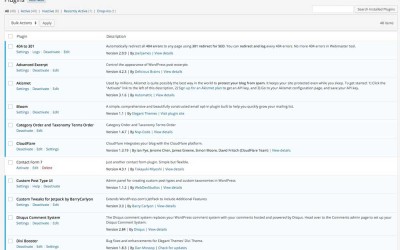In a simple answer, yes. Landing pages are an essential part of an overall marketing strategy.
Your main website should only be a small part of your marketing strategy. A smart inbound marketer understands that once you have done all the hard work to get visitors to a website, the next step is to convert them into leads for your business. And, this is where “landing pages” come in.
However, according to MarketingSherpa’s Landing Page Handbook (2nd edition), over 40% of the clicks for business to business end up on a homepage, not on a landing page that has been optimized to increase sales.
This means that almost 60% are missing a significant opportunity to make a sale and get a prospective client or customers more interested in what they have to offer. That’s a lot of money left on the table.
Now, I can hear the collective groans. You have bought a domain name and invested in getting a website up and running. It may have cost you a lot of time or a significant amount of money — most likely both. And then you hear someone saying, “You need to have landing pages.” UGH!
Many people will tune that out automatically because they don’t like the sound of it — more work… more money. But, here is the cold, harsh truth, well thought out and written landing pages are going to have a much more significant return on investment for you.
That doesn’t mean your website is unnecessary. Not by any stretch of the imagination. Think of your site as your company’s brochure and your landing pages as your salespeople. Your salespeople need literature (or the website) to give to prospects, so they can know more about the company they may be doing business with in the future. And, a brochure with no salespeople (your lead pages), more than likely isn’t going to convert people into paying customers automatically. They work hand-in-hand with each other.
What is a landing page?
Before we go any further, let’s define what a landing page is.
A landing page is a web page that people will land on because an ad, internet search, or email has directed them to that specific page, instead of your site’s homepage.
Once people have landed on one of your landing pages, it will give you the opportunity to capture a visitor’s information, via a lead-capture form (also known as a lead conversion form), or encourage them to take some other action that will convert them into a prospect or client.
A well-done landing page will focus on a particular type of potential customer and target them directly. Often they are driving traffic for that specific audience from a pay-per-click campaign or an email campaign, and sometimes they are offering incentives to get them to the page with these campaigns. Those incentives might be an offer of a free webinar, whitepaper, ebook, or even a trial for a service they provide.
Because they have created a landing page specific to their audience and target market, they can offer something that is of value to that audience and gets a larger percentage of people interested in their product or service, which in turn gives them more leads to follow up with and try to convert to paying customers.
Why you need landing pages.
Yes, I said “landing pages,” which was plural! Your site should contain multiple landing pages, each with a specific purpose in mind. Specific ads or emails should drive specific visitors to specific pages with a specific end goal in mind.
Landing pages can capture email addresses.
If the only thing you were using landing pages for were to collect email address for lead generation, it would be well worth it. I have often said that a company’s greatest asset is it’s “list.” A “list” is a collection of contact information for people who are interested in what a company has to offer, and these lists equate to a vast pool of names, addresses or emails that a company may be able to someday turn into paying customers.
Landing pages can give insight into which visitors are the most engaged with your website.
Having landing pages will allow you to capture leads, but, when correctly set up, they will also let you watch those existing leads behavior online and determine how they interact with your business. This type of data about their online actions will allow your sales team to identify the most lucrative leads to follow up on and give them insight into their behaviors for sales calls. They will know the pain points, desires and needs of the customers before they even begin to engage in a sales call with them. Ultimately, this will help to improve sales.
Landing pages can give your special offers a place to live.
Special offers and landing pages work well together. Special offers that are “gated” behind landing pages are quite useful for lead generation. When you offer something in exchange for an email address the visitor is in effect “paying” you for the item. Sure, there is no money involved, but they have “paid” you by giving you their contact information, which will, in turn, allow you to add to your list of prospects for future use. Many times companies will use different offers that target different audiences on multiple landing pages.
Landing pages can remove distractions.
Let’s face it; we live in an online world of information overload. It can all get quite confusing when you are trying to help a prospect focus in on what you have to say. Sending your visitors to just any old page on your website will show them a page full of distractions: links to other things, navigation options, sites maps, etc. All of these options distract from the message you are trying to send. Don’t give visitors a chance to succumb to the rabbit hole that is the internet. Keep them focused on a well designed and thought out landing (marketing) page.
Landing page for your visitors to make a decision.
So many people these days are very indecisive. This indecisive nature makes trying to convert them into paying customers all that much more difficult. A good landing page will force your website visitor to stay focused (see point above) and make a decision on your product or service, because, if you have done it right, you have removed all of the other distractions that one might see on a regular web page. It is essential that your landing page be well organized, to make that decision easier to execute and have a clear call to action that leaves no ambiguity as to what you want the visitor to do.
That’s not how it works…that’s not how any of this works.”
One of the major faux pas I often see clients making, when left to their own devices, it running AdWords without specific landing pages in mind.
Many people will send traffic to their homepage, with no intention of capturing email addresses and nurturing those potential leads. Doing this leaves advertisers broke and perplexed as to why they weren’t able to convert their visitors into paying customers with their Google Ads.
AdWords cost money, and if you aren’t sending your customers to a landing page tied to a specific ad so that you can send them a focused message, you are throwing money down the drain.
You may want to check out an article by Neal Patel, where he talks about the seven deadly AdWords mistakes many people make that leaves them with nothing to show for their investment.
How to create effective landing pages.
A well-designed landing page, with excellent copy, and a clear call to action are going to give you the best return on investment (ROI). That, of course, means that you will bring in the professionals to take care of this for you.
Professional inbound marketers understand what goes into making a landing page successful for their clients, and have the tools and knowledge to create effective landing pages. But, yes, that is going to cost you money.
Sometimes specially-designed professional landing pages may even cost more than your website or email newsletter template did when you had them created. That’s because good lead pages will most likely have a whole team working on them, or at the very least, a good copywriter and web designer or developer working together, to make sure they are a strong marketing piece for you.
But, if you would like to try your hand at one, a good starting point is Kissmetrics Blog article “Beginner’s Guide to Landing Pages.”
- How a Boutique Web Design Agency Offers More Personalized Service - June 23, 2025
- When Should You Redesign Your Website? 7 Warning Signs - June 20, 2025
- We’re Honored: Named One of the Best Web Design Blogs in Florida by FeedSpot - June 10, 2025





